What Is a Mailer Box?
2025-09-13 12:19:24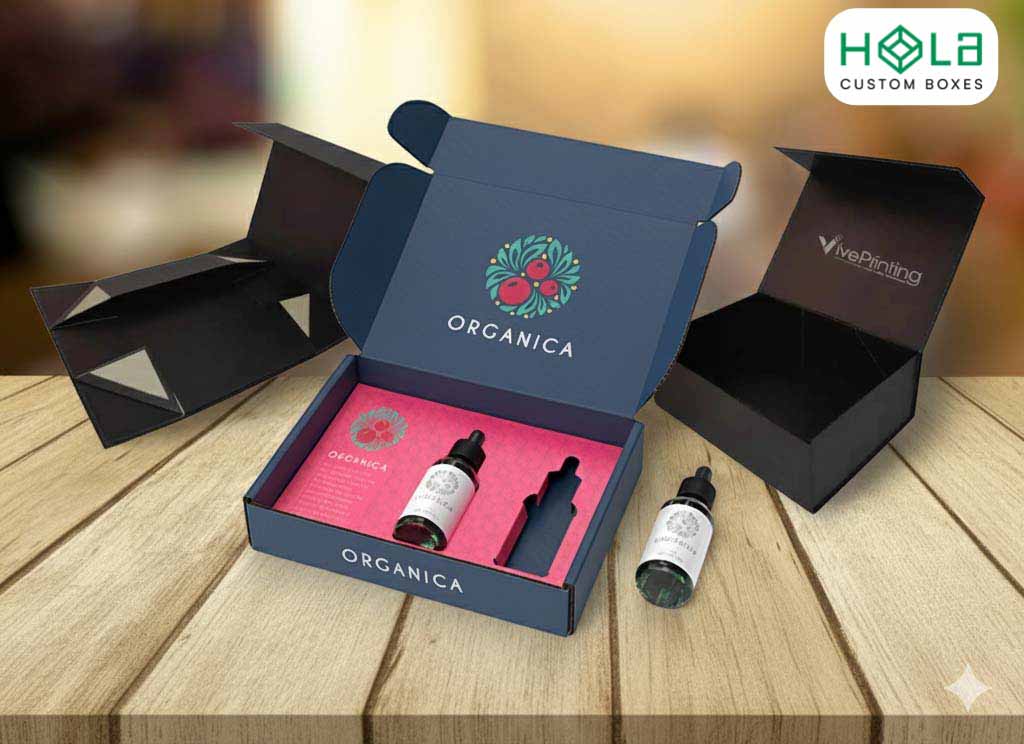
What Is a Mailer Box?
A mailer box is a corrugated E-flute, self-sealing shipping container engineered to protect products and speed fulfillment. You get right-sized dimensions tuned to USPS rate thresholds, tight tolerances, and crush-resistant flutes.
Typical builds use recycled liners/mediums, with white print surfaces for accurate branding and optional gloss or matte coatings.
Formats include tuck-top, roll-end, and tab-lock for varying security and impact resistance. It’s recyclable, supports eco standards, and reduces breakage-driven returns—there’s more that can optimize your SKU set and unboxing.
A mailer is a sturdy self-locking shipper—see custom merch boxes for branded subscriptions.
Main Points
- A mailer box is a corrugated cardboard shipping container designed to protect products during transit.
- It features self-sealing closures, eliminating tape and speeding up fulfillment.
- Sizes are optimized for product fit and USPS shipping rate thresholds to reduce costs.
- Options include tuck-top, roll-end, and tab-lock styles, with custom branding and finishes available.
- Made from recyclable, often 100% recycled materials, supporting sustainability and easy curbside recycling.
Definition and Key Features
A mailer box is a corrugated cardboard shipping container engineered to protect goods in transit while minimizing packing time and material waste.
You use mailer boxes as right-sized packaging to protect products, reduce void fill, and standardize workflows. A self-sealing closure accelerates fulfillment and eliminates tape, improving process reliability.
You select sizes aligned to product dimensions and USPS tiered shipping rates to optimize postage and cube utilization. Custom mailer boxes support branded graphics, elevating customer experience without compromising structural efficiency.
Pair mailers with in-store custom display packaging boxes during launches.
Eco-friendly content—often 100% recycled and widely recyclable—helps you meet sustainability objectives while maintaining performance in shipping environments and distribution handling. Additionally, you can choose from CMYK and PMS printing options with finishes like Foiling, Spot UV, and Embossing to enhance brand presentation.
Common Materials and Construction
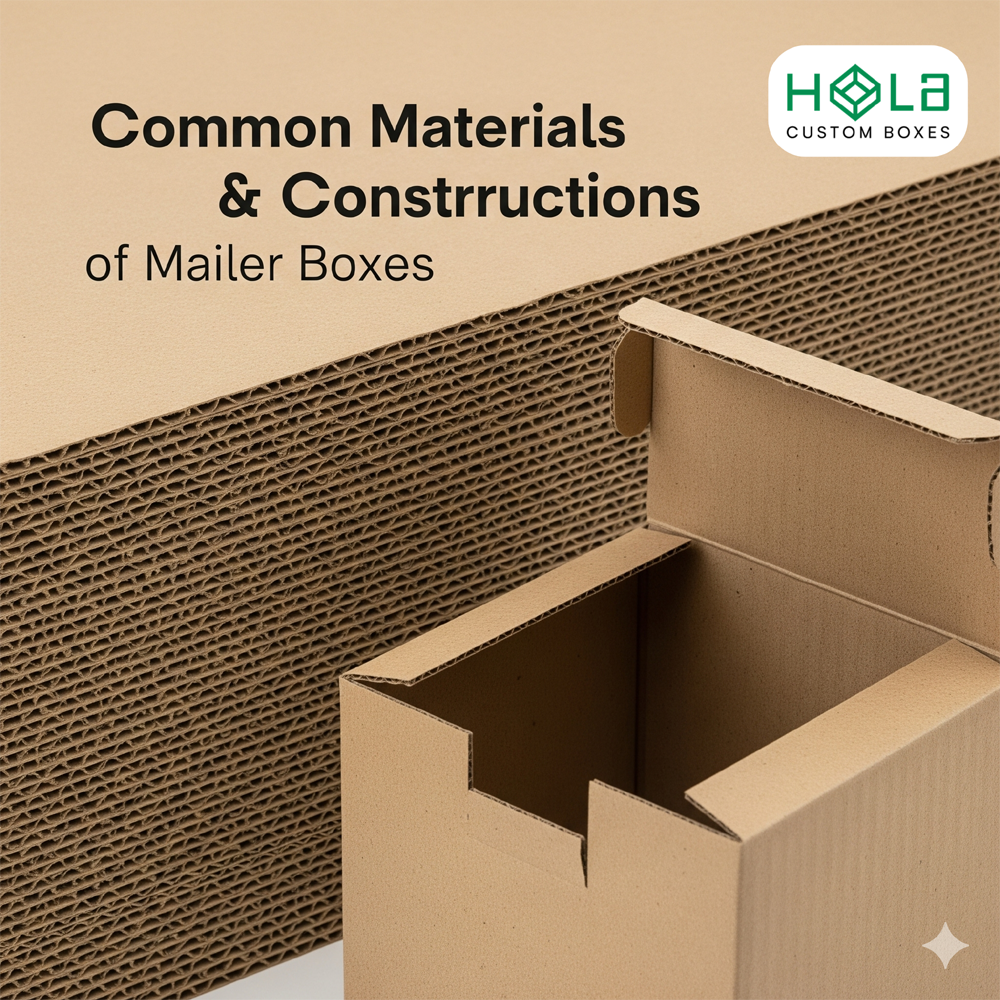
Materials define performance: you’ll specify corrugated cardboard—most commonly Eflute—for a high strength-to-weight ratio, crisp die-cuts, and efficient palletization.
You’ll target paper grades (liner and medium) to tune durability and structural integrity, balancing edge crush and burst performance with cost.
Mailer boxes are made with E-flute construction to stay durable yet lightweight for shipping.
Mailer boxes use E-flute construction for durable, lightweight shipping performance and crisp, reliable protection.
Specify white outside/inside liners when color accuracy matters in custom packaging.
For eco-friendliness, require 100% recycled materials or high post-consumer content without compromising compression metrics.
Calibrate caliper and flute profile to product mass and distribution hazards, ensuring protective fit, clean folds, and efficient kitting.
You can also choose finishes like gloss, matte, or uncoated to protect print and enhance presentation, with options such as spot UV and foiling to elevate brand impact.
For a broader system, align with retail packaging boxes.
Types of Mailer Boxes
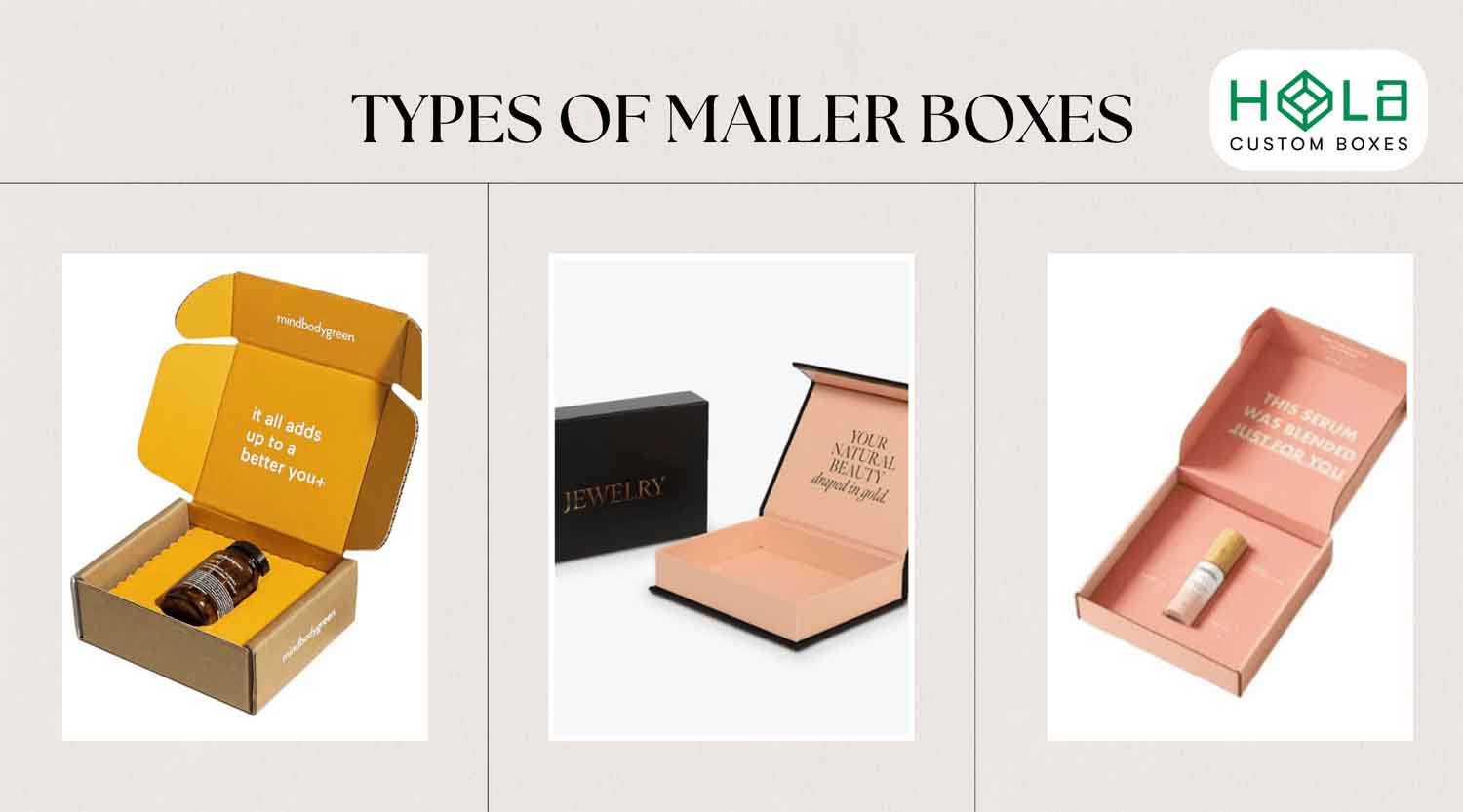
Form follows shipment class: types of mailer boxes span 11 standardized sizes engineered to maximize interior volume while aligning with USPS tiered rate thresholds. You’ll choose by content density, weight, and fragility. Corrugated cardboard is the baseline, with flute profiles tuned to protect your products, especially when shipping fragile items. Select a custom mailer box via online templates to standardize dielines and sustain print fidelity while advancing sustainable packaging.
| Type | Primary Use |
|---|---|
| Tuck-top | General goods |
| Roll-end | Impact resistance |
| Tab-lock | Security |
| Eco-light | Low mass |
These mailer boxes offer a precise packaging option that elevates customers’ experience and supports circular recovery. Plus, choosing recyclable materials and eco-friendly packaging aligns with sustainability goals and enhances brand perception.
Benefits for Ecommerce and Retail
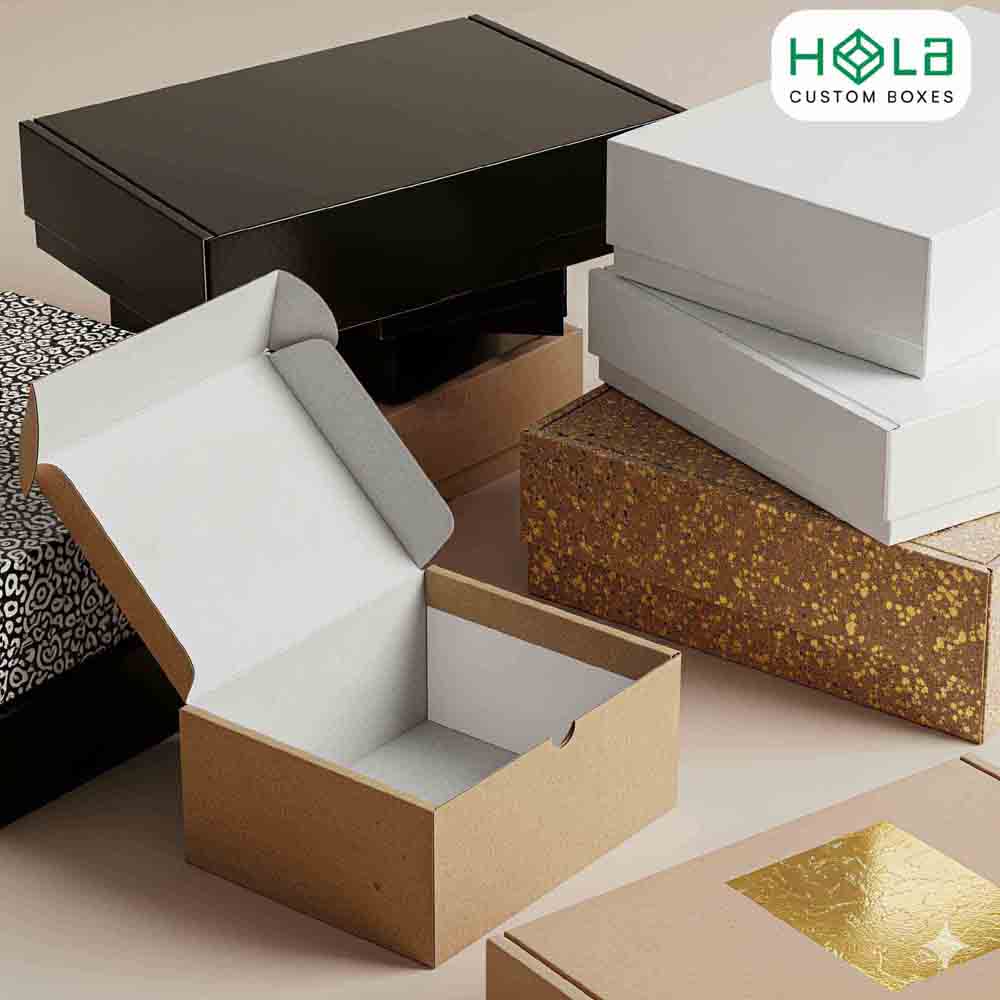
While ecommerce scales on thin margins and strict carrier specs, mailer boxes deliver measurable gains: they protect orders in transit, reduce breakage-driven returns, and standardize packing to USPS tier thresholds.
You use mailer boxes to protect your products with crush-resistant flutes, tight tolerances, and efficient cube utilization, cutting DIM weight and void fill.
In ecommerce and retail, custom shipping boxes align to SKU sets, accelerating pick-pack and improving customer satisfaction. They’re sustainable, often built from 100% recycled materials, meeting CSR and EPR targets.
A unique unboxing experience, proven in the $12–$15B subscription segment, drives retention and measurable LTV uplift.
Need a durable branded mailer? Start with custom merch boxes.
Customization and Branding Options
Because packaging is a functional spec as much as a canvas, mailer boxes offer precise customization and branding controls that map to operational constraints and carrier rules.
You’ll size custom boxes across 11 options to optimize interior volume against USPS tiers. Use online templates to align dielines, fold tolerances, and panel hierarchy with your brand identity.
Specify custom printing via digital CMYK for logos and vibrant colors with consistent Delta E targets. Add aqueous or UV finishes for rub resistance and visual pop.
Coordinate packaging tape, inserts, and print to a single Pantone guide. Include thank you notes to elevate customer experience and reinforce recall.
When to Choose a Mailer Box vs. Other Packaging
After locking in dielines, print methods, and finishes, choose a mailer box when the product profile and shipping method align with its strengths.
Use mailer boxes for lightweight, flat, or delicate products—apparel, books, cosmetics—where minimal cushioning still guarantees protecting your products. You’ll reduce dimensional weight and shipping costs, especially with flat-rate services.
Select shipping boxes (regular cardboard boxes) for heavier or highly fragile items needing robust void fill. When brand presentation matters, specify custom graphics to elevate unboxing without excessive materials.
Prefer foldable, paper-based constructions when you need sustainable packaging and efficient packing lines. Validate with transit testing (ISTA/ASTM) before scale.
Sustainability and Recycling Considerations
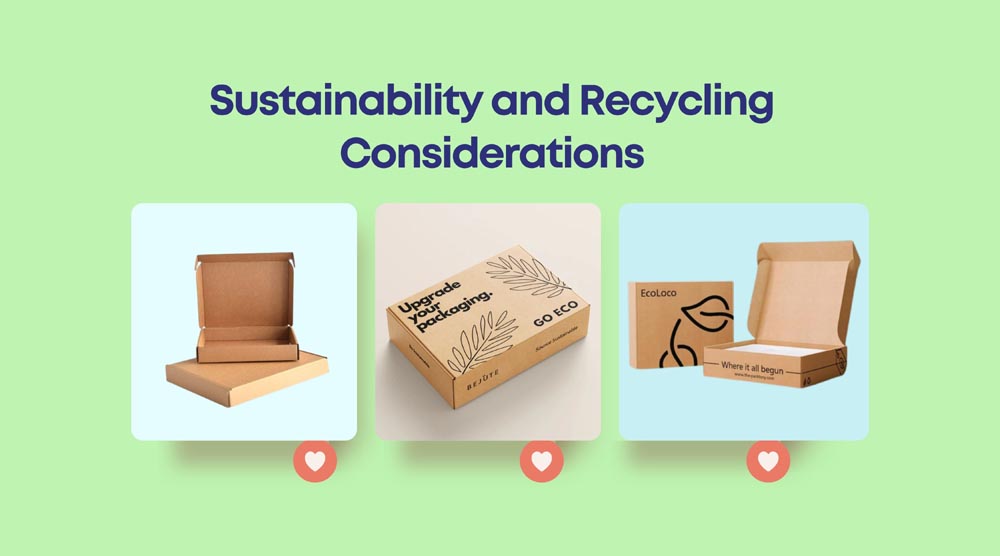
Even at scale, mailer boxes deliver measurable sustainability gains by design. You specify corrugated cardboard with high post-consumer content and achieve a 96.5% recycling rate, validating eco-friendly packaging claims.
The substrate is recyclable and biodegradable, supporting a circular economy and quantifiable waste reduction. Structural efficiency matters: mailer boxes use less paper and glue than conventional shippers, lowering resource intensity and carbon factors per ISO life-cycle reporting.
Choose sustainable materials that meet fiber-source standards and regional MRF guidelines. Clear on-pack recycling instructions improve recovery.
Brand impact follows: 66% of consumers willing to pay more reward credible, standards-aligned sustainability documentation.
Frequently Asked Questions
What Is the Difference Between a Mailer Box and a Shipping Box?
You’re comparing structure and use. A mailer box uses lightweight corrugated, auto-lock flaps, and compact profiles; key mailer box features favor flat items and speed.
Shipping box materials are heavier kraft corrugated with broader shipping box sizes for bulk.
Mailer box designs emphasize efficiency, mailer box advantages reduce postage, and mailer box customization is simple.
Shipping box durability supports reuse, but shipping box costs rise with weight and strength for fragile loads.
Can Mailer Boxes Be Shipped?
Yes, you can ship mailer boxes. You evaluate mailer box benefits against shipping regulations, verifying carrier standards for dimensions, strength, and labeling.
You select packaging materials—corrugated grades, inserts, and tapes—to protect contents. You leverage customization options without compromising compression ratings.
You weigh sustainability factors like recyclable substrates. You apply size considerations to minimize dimensional weight.
You perform cost analysis, comparing flat-rate versus weight-based pricing. You plan delivery timelines per service levels and route constraints.
What Are Mailers Used For?
You use mailers for protective packaging solutions, cost effective shipping, and precise retail product presentation.
They deliver mailer box benefits: structural integrity, optimized cube, and secure closures.
Custom mailer designs create strong branding opportunities and consistent unboxing across subscription box uses.
Specifying eco friendly materials reduces mass and waste while meeting sustainability targets.
You select board grade, coatings, and print to standards, ensuring impact resistance, transit durability, and efficient fulfillment integration with automated lines.
Is It Cheaper to Send a Mailer or Box?
It’s usually cheaper to send a mailer.
Lower mailer box costs stem from reduced packaging materials, superior size efficiency, and favorable weight considerations under dimensional pricing.
Shipping rates drop further in bulk shipping scenarios.
Carrier comparisons (USPS, FedEx, UPS) often show flat-rate or lightweight tiers benefiting mailers.
Boxes add protection but raise costs and may extend delivery times due to handling and cubic thresholds.
For small, flat items, choose mailers; reserve boxes for fragile loads.
(Recommended Products)
